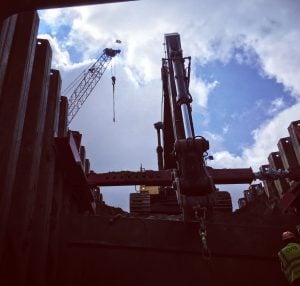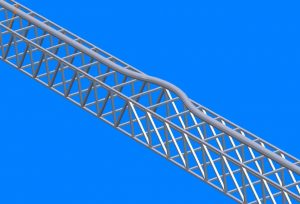Solo: without a companion, to perform by oneself. Better yet, “a performance in which the performer has no partner or associate.” In the past I have written about the responsibility of the employer and the responsibility of the employee. I have criticized those responsible for jobsite safety and berated those who are tasked with the responsibility of enforcing the standards and regulations. I have described the obligations and responsibilities of the erectors and the designers. It would seem that all these professionals operate by themselves without a real connection with each other. Such is not the case however.
Those involved in the scaffold business cannot go it alone. The projects highlighted in this issue of the magazine weren’t accomplished by one individual; a scaffold project have always been the product of a team of people. Who in that group is the most important, you may wonder. Is it the designer, the erector, the supplier or the safety director? Or is it the truck driver delivering the equipment? After all, if the equipment never shows up on the job the safety won’t be an issue and design won’t be an issue. Maybe it’s the designer who is the most important. Based on my experience, I have to say no. But I also have to say that it isn’t the safety technician nor is it the supplier although each has a critical role in a given scaffold project. Maybe it’s the project owner since there would be no scaffold project if there was no project to begin with. There seems to a pattern emerging here. It looks to me like nobody is the most important and it looks to me like everybody is the most important person. That brings us right back to teamwork!
I remember when I designed the 350 foot tall scaffold for the Nebraska State Capitol. I would like to think that the design was critical to the success. While it was critical that the design was efficient, safe and functional, the design wouldn’t have gone anywhere without the exceptional skills of Joel Harry, the lead erector. He is the one, as far as I am concerned, that made the project a success. Sure, the scaffold supplier had to perform, the contractor had to cooperate, and the design had to be effective, but this project made me think about how critical the erector is to the overall success of a scaffold project. Yet, he couldn’t have done it on his own without the help of additional trained erectors. Nor could I or Joel have completed the project without the cooperation of the contractor, the owner and the equipment supplier.
What this means is that every substantial scaffold project requires trained professionals, individuals who have respect for themselves and others. This is why the Scaffold Industry Association has a training program. It is essential to have trained, educated, responsible erectors, designers, and safety personnel. None of the projects described in this magazine were constructed by neophytes. None of these scaffolds could be safe without trained professionals involved in the design and erection of the equipment. Nor could any of these scaffolds be safe without the dedication of trained safety professionals. Nor would we strive for greater safety without the encouragement of compliance officers. So, when you read about these projects, think about the workers involved. I salute the erectors, designers, and safety professionals who make these scaffolds possible. It is their dedication, knowledge, and expertise that make it all possible. It is their work that clearly shows how to do it right!













